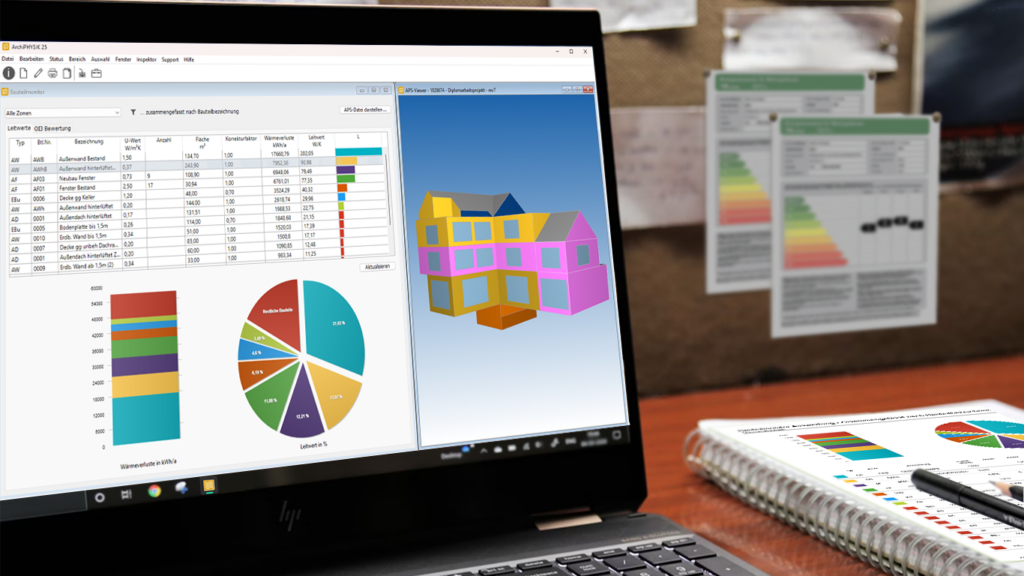Building component monitor for efficiency impact assessment: A Software Component to identify and visualize energy leaks
Abstract:
The Building Component Monitor is an innovative extension to ArchiPHYSIK, a comprehensive software solution for standard-compliant building physics reports and verifications for thermal, acoustic, vapour diffusion, energy performance and ecology for residential and non-residential buildings (archiphysik.at, 2024). This extension enables accurate analysis and optimisation of the energy performance of buildings. The main objective of this work was to develop a tool for the rapid identification and visualisation of energy losses in buildings by examining the conductance values of building components. The methodological approach included the development of a user-friendly extension, the integration of different filtering methods for detailed analysis and the implementation of a new calculation method for transmission heat losses. Special attention was paid to the design of an intuitive user interface and the integration of CAD models for visualisation of the results. The results demonstrate the effectiveness of the component monitor in identifying weak points in the building envelope. The tool allows for a differentiated analysis of different component types and properties, ensuring an accurate assessment of energy efficiency. The newly integrated calculation method for transmission heat losses proved to be accurate and reliable. This work makes a significant contribution to improving energy analysis in buildings by providing a powerful tool to assist architects and engineers in making informed decisions to optimise energy efficiency.

